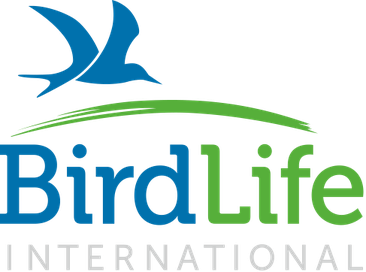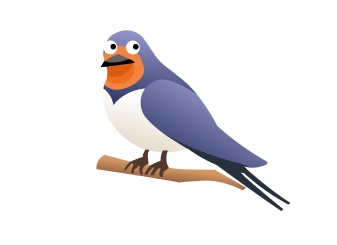

Citizen science in Spring Alive
Anyone can be a citizen scientist. Community volunteers are especially useful in big projects where scientists need to gather information from across the whole country, or even the whole world.
As well as our usual programme of lessons, workshops and acitivities, Spring Alive is kicking off 2022 with a brand new website, which will provide an updated platform for activities, teaching resources and news. The public will also be able to log their sightings of the seven Spring Alive focal species [1] on our interactive map, which will record the birds’ progress in real time as they migrate from country to country. It’s always fun to put yourself on the map, but citizen science initiatives such as these are not just enjoyable – they also play an important role in scientific research and public engagement. Here’s everything you need to know about citizen science and how you can take part.
What is citizen science?
Put simply, citizen science is scientific research conducted by people who are not professional scientists. Some of the biggest discoveries in the world have been made by people without official scientific qualifications or funding. For example, the planet Uranus was discovered in 1781 by amateur astronomist William Herschel, who built his own telescope and earned a living as a musician. Even the famous naturalist Charles Darwin, who came up with the theory of evolution, originally trained as a doctor.
Anyone can be a citizen scientist. Community volunteers are especially useful in big projects where scientists need to gather information from across the whole country, or even the whole world. In these situations, there are not enough qualified scientists to carry out this research all by themselves, so the help of the general public is vital.
Citizen scientists don’t have to be experts. Often, the tasks are quite simple – for example photographing plants or spotting birds in the garden. With more complex tasks, volunteeers will be given training on exactly what to do. Then they will send their observations back to the scientists running the project, who put them all together and study the results.
How does citizen science help birds?
Birds can be found in almost every part of the world and often migrate vast distances. Citizen science can help us keep track of bird numbers and how they are changing around the globe. With this information, we can identify species and habitats that are under threat, and act to help them. For example, the volunteer bird counters of the Pan European Common Bird Monitoring Scheme helped to discover that Europe has lost around 600 million breeding birds in the last 40 years, in large part due to intensive farming. Meanwhile, citizens across the world use the Natura Alert mobile phone app to report any dangers that are threatening their local Important Bird & Biodiversity Areas, prompting conservation groups to take action.
Birds are also found in remote areas that are difficult for scientists to access. Local people can help here, too. In 2021, two friends were out gathering materials in the Borneo rainforest when they came across an unfamiliar bird species. After sending a photograph to their local birdwatching group, they learned that they had rediscovered the Black-browed Babbler – a species lost for 172 years and feared extinct.
Another way that citizen science helps birds is by encouraging people to love and respect nature. Spending time watching and learning about birds makes people more likely to protect them. This idea has been around for centuries: in 1900 ornithologist Framk M. Chapman launched the ongoing Audubon Christmas Bird Count in the USA to replace the traditional Christmas bird hunting contest that killed thousands of birds a year. In Cyprus, where bird hunting is still ingrained in the local culture, our partner BirdLife Cyprus released a children’s bird guide, What’s that bird?, to inspire a new generation of nature lovers.
How can I get involved?
There are lots of different citizen science projects to choose from. One fun way for young people to get involved is to enter sightings of the Spring Alive species on our website. This will help us to keep track of the birds’ migrations as the waves of species move across the map.
Get in touch with your national Spring Alive Partner to learn about citizen science projects in your country, or if you’re looking for something more global, download the eBird mobile app, where you can log your bird sightings wherever you are in the world. If you just want a taster, consider signing up to a one-off bird count event such as Global Big Day, Global Bird Weekend or EuroBirdwatch. Outside of these, if you see any unusual wildlife or spot threats to nature, you can always report them directly to your local conservation group.
When taking part in a citizen science project, follow the guidelines carefully and try not to disturb wildlife. Unless instructed otherwise, try to stay local or use eco-friendly modes of transport to reduce fuel emissions. Always make sure the information you enter is accurate – for example, by consulting a bird guide – and ask the organisers if you’re unsure about anything. This will ensure that your observations are as useful and scientific as possible, and can help us to direct conservation action where it’s most needed.
Are you a teacher or an educator?
Help your pupils become a citizen scientist, take part in our teachers' contest and get awarded!
Species
Related Themes
CITIZEN SCIENCE FOR BIRDS
Website-et e partnerëve të tjerë
- Albania
- Armenia
- Azerbaijan
- Belarus
- Bosnia and Herzegovina
- Burkina Faso
- Croatia
- Cyprus
- Czech Republic
- España
- Georgia
- Ghana
- Ireland (English)
- Ireland (Gaelic)
- Ivory Coast
- Kazakhstan
- Kenya
- Latvija
- Lebanon
- Luxembourg English
- Luxemburg de
- Macedonia
- Malta (English)
- Mauritania
- Montenegro
- Morocco
- Nigeria
- Polska
- Romania
- Senegal
- Serbia
- Sierra Leone
- Slovakia
- South Africa (Affikaans)
- South Africa (English)
- Uzbekistan
- Zambia
- Zimbabwe